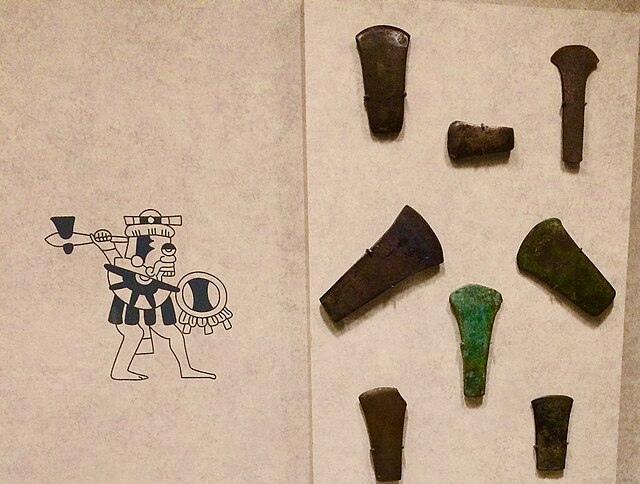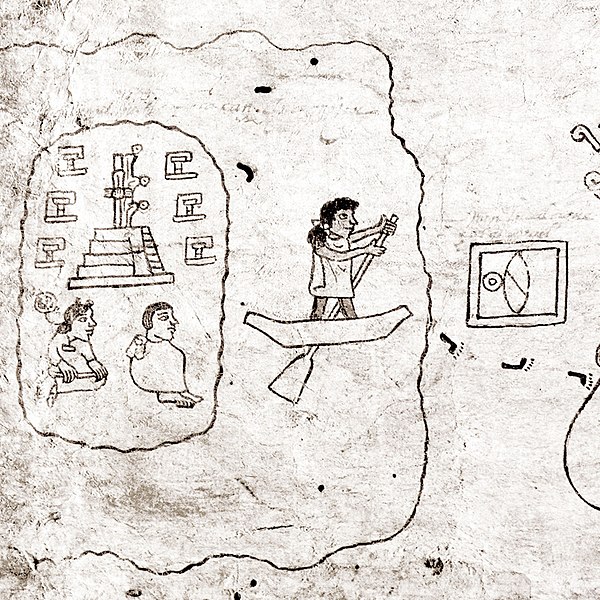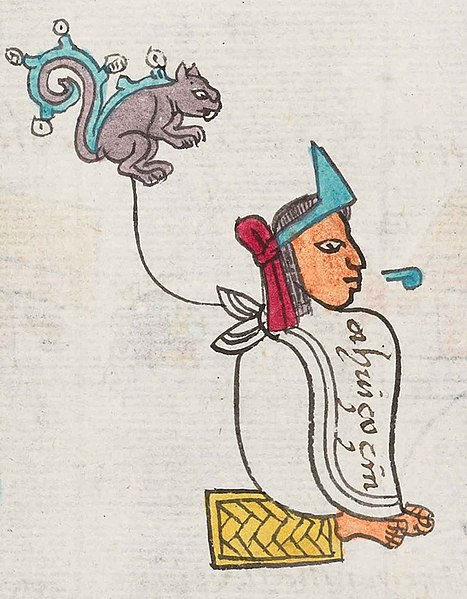“Aztlán” is the ancestral home of the Aztec peoples. Astekah is the Nahuatl word for "people from Aztlan". Aztlan is mentioned in several ethnohistorical sources dating from the colonial period, and while they each cite varying lists of the different tribal groups who participated in the migration from Aztlan to central Mexico, the Mexica who went on to found Mexico-Tenochtitlan are mentioned in all of the accounts.
Depiction of the departure from Aztlán from an island in the 16th-century Codex Boturini. Aztlán is also depicted as some island in the Aubin and Azcatitlan codices.
The Aztecs were a Mesoamerican culture that flourished in central Mexico in the post-classic period from 1300 to 1521. The Aztec people included different ethnic groups of central Mexico, particularly those groups who spoke the Nahuatl language and who dominated large parts of Mesoamerica from the 14th to the 16th centuries. Aztec culture was organized into city-states (altepetl), some of which joined to form alliances, political confederations, or empires. The Aztec Empire was a confederation of three city-states established in 1427: Tenochtitlan, city-state of the Mexica or Tenochca, Texcoco, and Tlacopan, previously part of the Tepanec empire, whose dominant power was Azcapotzalco. Although the term Aztecs is often narrowly restricted to the Mexica of Tenochtitlan, it is also broadly used to refer to Nahua polities or peoples of central Mexico in the prehispanic era, as well as the Spanish colonial era (1521–1821). The definitions of Aztec and Aztecs have long been the topic of scholarly discussion ever since German scientist Alexander von Humboldt established its common usage in the early 19th century.

Aztec metal axe blades. Prior of the arrival of the European settlers, see: Metallurgy in pre-Columbian Mesoamerica
Large ceramic statue of an Aztec eagle warrior
A page from the Codex Boturini depicting the departure from Aztlán
Ahuitzotl in Codex Mendoza




